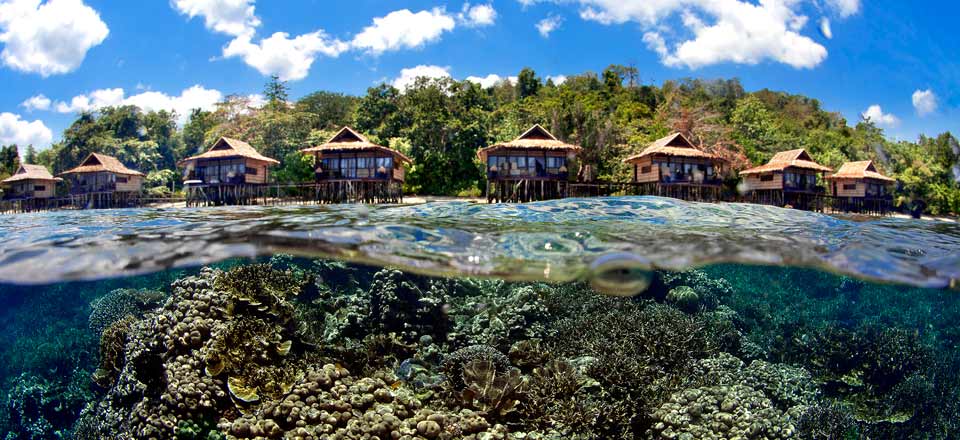Underwater paradise for Divers and Snorkelers in Raja Ampat
It is no exaggeration that Raja Ampat is referred to as an “Underwater Paradise”. If you’ve reached this article, we’re presuming that you’re planning your next diving expedition to be in the largest archipelago in the world: Indonesia.
Arguably possessing some of our blue planet’s best dive sites, Indonesia offers unparalleled diving adventures and is home to an extensive quantity of marine life. One of these dive sites includes Raja Ampat in the island of Papua.
Raja Ampat is geographically located in the hub of the world’s Coral Triangle, a marine area supporting 2000 species of reef fish, 600 species of coral reef, and nurtures the worlds 7 sea turtle species. The staggering marine biodiversity in Raja Ampat has made diving in this island the most talked about activity in Indonesia.
The name “Raja Ampat” is derived from a local legend called “The four Kings”. Located in a remote place, Raja Ampat gives off a unique atmosphere of pure bliss and tranquility. Raja Ampat Diving condition

would feel almost like it was untouched. With average sea temperatures from 22˚- 30 ˚ Celsius, Raja Ampat‘s ocean has approximately 603 hard coral species (this number represents 75% of the total population of coral reefs in the whole world) and estimated to house 1397 species of fish. Giving the island the title “Fish capital of the world”.
Raja Ampat Biodiversity Coral
Other than the large population of fish species in the marine waters of the Raja Ampat archipelago, there are also a recorded number of 60 crayfish species, 699 types of soft animals (species of mollusks) that includes: 530 snail species, 159 shells species, 2 Scaphopoda species, 5 squid species, and 3 Chiton species. The rich underwater life in Raja Ampat has made it one of the most interesting diving destinations with so much to uncover for scuba enthusiasts around the world.

The island is all about diversity – not only the marine biodiversity, but also the diverse number of dive sites to go to for your next diving adventure. There are dive sites where soft corals and sea fans dominate the waters, others with an amazing variety of hard corals, sea grass beds, mangroves, shallow reefs, caves, black sand, white sand, an endless list! Then comes the fish, lots of them, in more shapes, colors, and sizes compared to anywhere else in the world. Not only are there loads of fish, but a vision of what a balanced ecosystem looks like is well presented by observing all the levels of the food chain – from pygmy seahorses to top predators.

In many dive sites, an array of brightly colored soft corals can be found close to the surface of the water which, if illuminated by natural sunlight, makes these places spectacularly colorful. Watch as the reefs in Raja Ampat buzz with life!
Where to Dive in Raja Ampat
Raja Ampat is a huge 50,000 sq km archipelago composed of hundreds of islands and an astounding diversity of habitats, which translates to wildly different diving experiences. Ranging from pelagic drift dives to magical muck dives.
There are thousands of potential dive sites. Exploration is still going on to this day, and on every trip, there are chances for new, amazing species and environments to discover. Even on a 12-day trip, you will only have a chance to see some out of many of the beauties Raja Ampat has to offer.

Papua Paradise Eco Resorts boasts a strategic location that allows easy access to your desired diving location in Raja Ampat. As an eco-resort, we have a house reef in the area where you can encounter small and large species of fish that include the mandarin fish, manta rays, wobbegongs, bamboo and reef sharks and if you’re fortunate, bump into a dugong. We have access to ample amounts of fresh water, therefore we don’t use water purifying mechanisms that could which waste energy and can potentially pollute the environment.
If you need any help in planning your future trip to Papua’s natural wonder of Raja Ampat, don’t hesitate to contact us for more information regarding how to get here and where to stay, and the best dive sites to visit.

